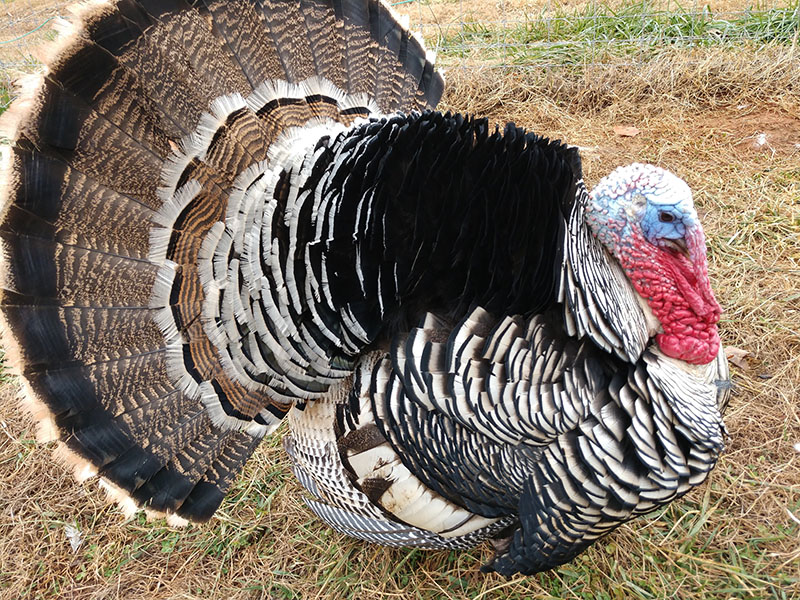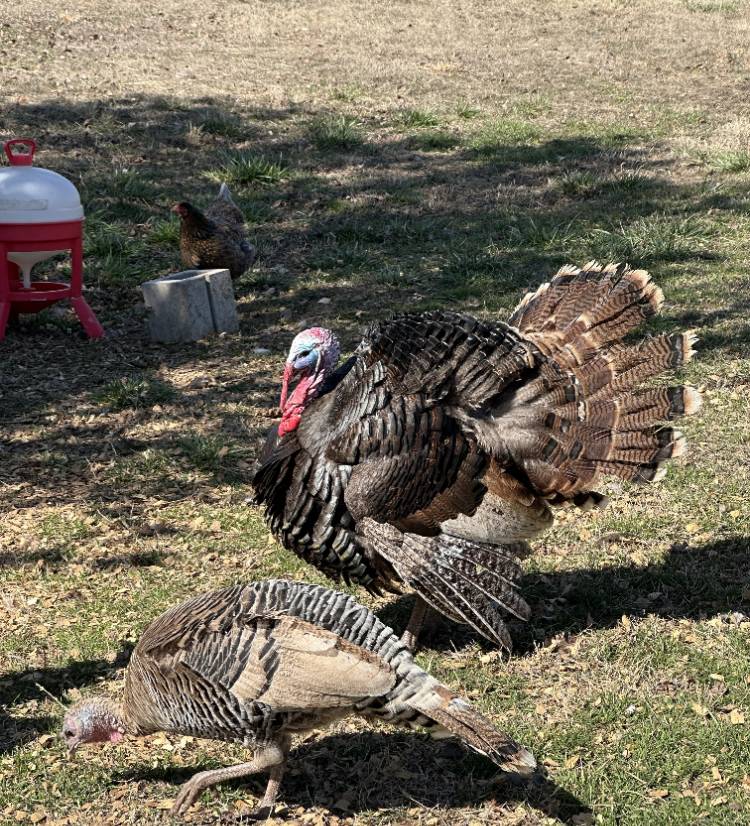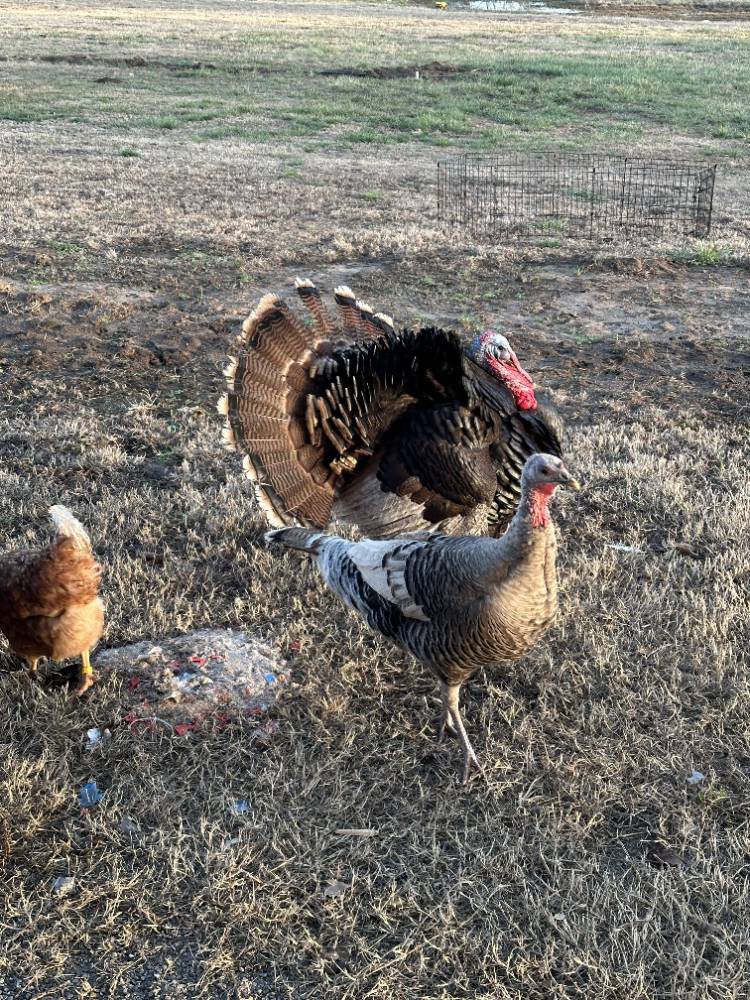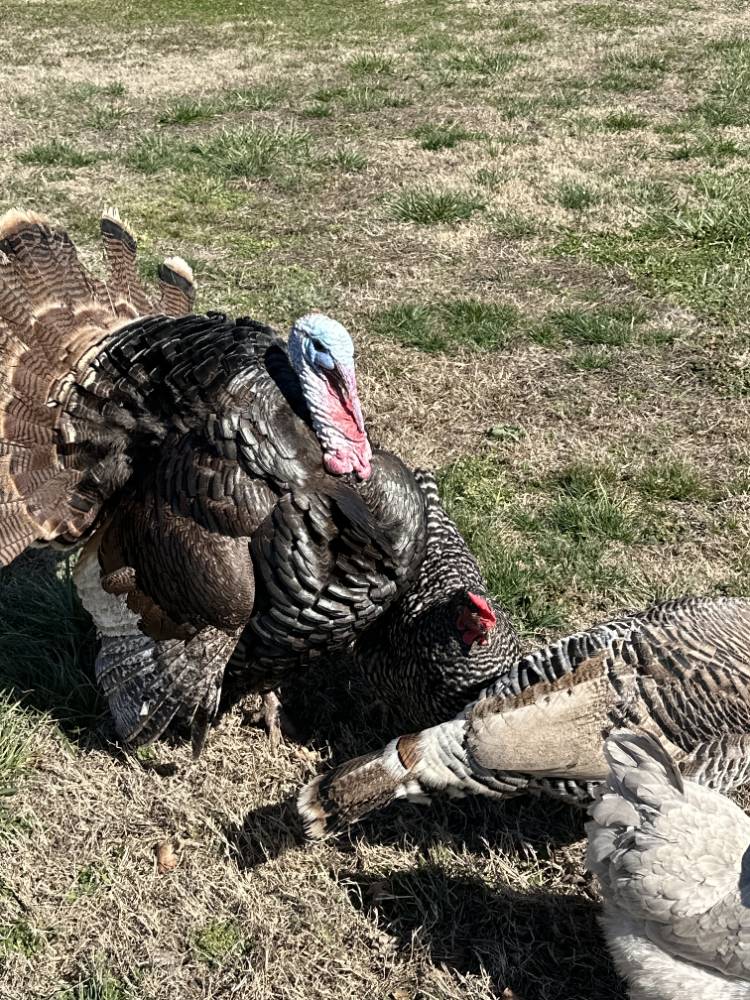Narragansett Turkeys
 The Narragansett turkey was developed in Narragansett Bay, its namesake, Rhode Island.
It was most likely developed from a cross-breeding between wild Native Eastern turkeys
and Norfolk Blacks. The Narragansett is most popular in the Rhode Island and Connecticut.
It was recognized by the APA in 1874. Its popularity started declining in the 1900's
when the Bronze turkey was standardized. The plumage of the Narragansett is unique
with tan, black, white and gray patterns throughout. The wings have black and white
barred feathering. It has a grayish black beak, orange-pink legs and feet, red wattles
and a black beard. The tom weighs around 23 lbs while the hen weighs around 14 lbs.
The Narragansett was not standardized for its meat so the size is not set for table
qualities. The hens are considered nurturing mothers and great layers. The eggs are
spotted tinted or brown.
The Narragansett turkey was developed in Narragansett Bay, its namesake, Rhode Island.
It was most likely developed from a cross-breeding between wild Native Eastern turkeys
and Norfolk Blacks. The Narragansett is most popular in the Rhode Island and Connecticut.
It was recognized by the APA in 1874. Its popularity started declining in the 1900's
when the Bronze turkey was standardized. The plumage of the Narragansett is unique
with tan, black, white and gray patterns throughout. The wings have black and white
barred feathering. It has a grayish black beak, orange-pink legs and feet, red wattles
and a black beard. The tom weighs around 23 lbs while the hen weighs around 14 lbs.
The Narragansett was not standardized for its meat so the size is not set for table
qualities. The hens are considered nurturing mothers and great layers. The eggs are
spotted tinted or brown.
The Narragansett turkey population is not very large, which is

the reason they are considered threatened. The American Livestock Breeds Conservancy took a census in 1997; the results came back with
six breeding Narragansett turkeys in the United States. A census was taken again in 2003 and found 368 breeding turkeys.
Figure 2. Image provided by Rockin J Farms in Jenks, OK.
References
Ekarius, Carol. "Turkey: Narragansett." Pocketful of Poultry: Chickens, Ducks, Geese, Turkeys. North Adams, MA: Storey Pub., 2007. 246-47. Print.
"Narragansett Turkey." The Livestock Conservancy. The Livestock Conservancy, n.d. Web. 15 July 2015.
"Narragansett Turkeys." Beauty Of Birds. Avianweb, n.d. Web. 15 July 2015.


